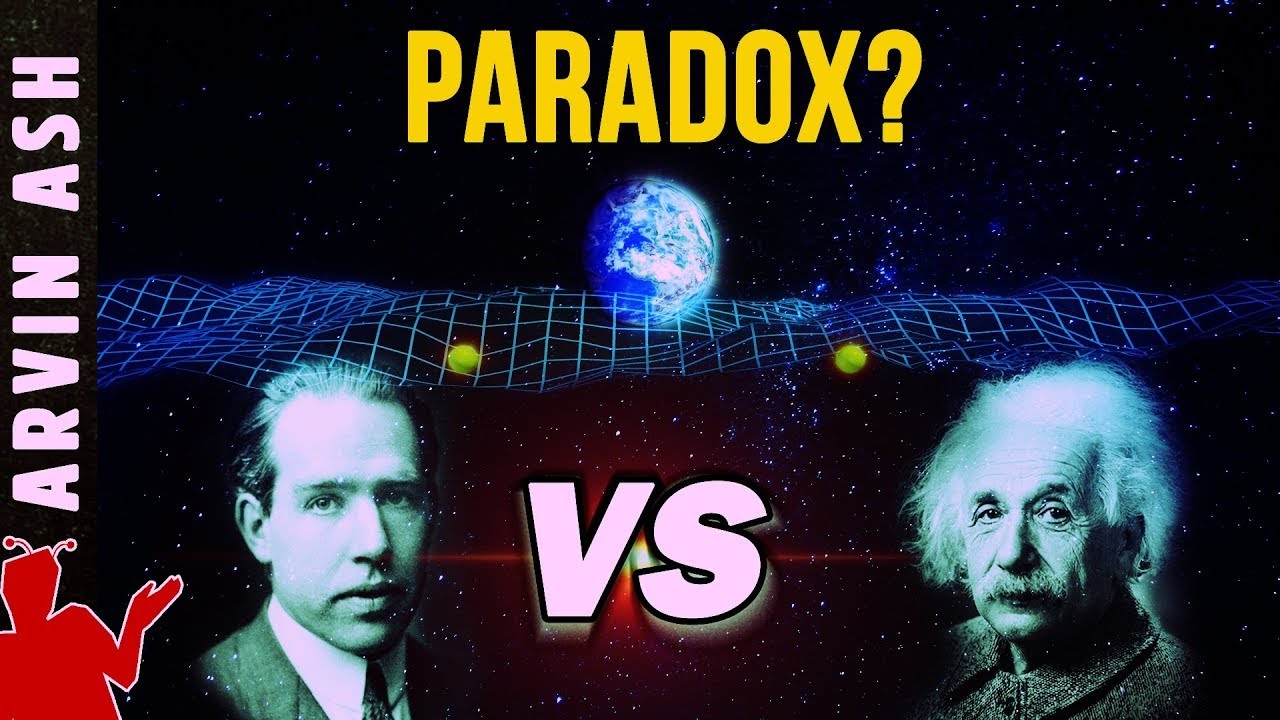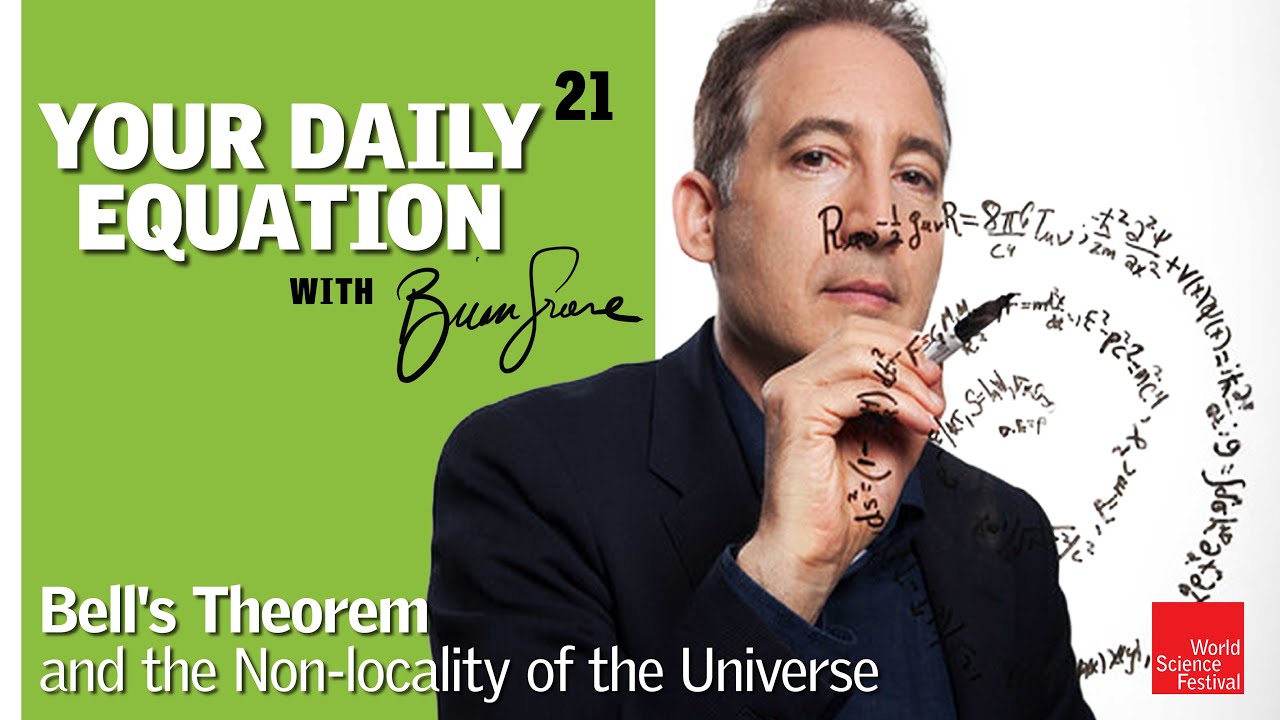Best lecture so far on what Entanglement is in Quantum Physics
TLDRAlbert Einstein disagreed with Niels Bohr on quantum entanglement. Einstein believed quantum mechanics was incomplete because entangled particles had no definite properties, only correlational ones. Bohr insisted entanglement was a fundamental aspect of reality. Einstein devised thought experiments like the EPR paradox to show quantum mechanics' incompleteness. But entanglement is generic, spreading rapidly between interacting particles. To simulate it classically requires instant communication between parts, implying quantum non-locality. Though information can't be transmitted faster than light using entanglement, its existence disturbed Einstein's notion of physical reality.
Takeaways
- 😯 Einstein was bothered that quantum mechanics provides complete information about a composite system but no information about its individual parts
- 😀 Entanglement is a phenomenon where measuring one part of a quantum system reveals information about another part, even if widely separated
- 🤔 Einstein and Bohr debated entanglement and quantum mechanics for over 20 years
- 💡 Einstein's 1935 EPR paper argued quantum mechanics is incomplete because it lacks "elements of physical reality"
- 📈 Entanglement tends to spread quickly among quantum systems that interact, like an infectious disease
- 🔬 Measuring one half of an entangled quantum system reveals information about the other half
- 😮 To simulate entanglement classically requires instantaneous communication between parts using wires
- 😠 Bohr didn't seem to fully understand entanglement but essentially told Einstein to take an aspirin and not worry about it
- ⚛️ In an entangled state of two spins, measuring them along the same axis always gives opposite results +/- 1
- 🔎 Entanglement can occur between properties of separated regions of space, not just between particles
Q & A
What was the famous debate between Einstein and Bohr about?
-The famous debate between Einstein and Bohr was about quantum mechanics. Specifically, it reached its climax over the concept of quantum entanglement.
Why did the concept of entanglement disturb Einstein?
-The concept disturbed Einstein because in a maximally entangled state, you can have complete information about a composite quantum system yet have absolutely no information about its individual parts. This lack of knowledge about the parts bothered Einstein.
Can you simulate a single quantum spin on a classical computer?
-Yes, you can simulate a single quantum spin on a classical computer using a random number generator to produce the random measurement outcomes and a memory to record the spin state.
What is needed to simulate two entangled spins on separate classical computers?
-To simulate two entangled spins on separate classical computers, you need a central processor connected by wires to the two computers to coordinate the simulation. This is to mimic the non-local correlations between entangled spins.
Does simulating quantum entanglement allow faster-than-light communication?
-No, even though the simulation uses instantaneous classical communication, you cannot actually send usable messages faster than light. The no-communication theorem still holds.
How common is quantum entanglement?
-Quantum entanglement is extremely common and tends to spread quickly. Even a small amount of interaction causes a large system to become highly entangled.
Can regions of space be entangled?
-Yes, it also makes sense to talk about entanglement between regions of space, not just between particles. You can have entangled states describing correlations between empty regions.
What were the two papers Einstein wrote in 1935 about?
-The two papers were on completely different topics. One was with Rosen on what became known as the Einstein-Rosen bridge (a precursor to ideas about wormholes). The other was with Podolsky and Rosen and introduced the famous EPR paradox about entanglement.
Did Bohr ever truly understand quantum entanglement?
-No, most assessments are that Bohr never fully understood entanglement, despite winning the debate with Einstein. He failed to fully grasp the conceptual implications Einstein was concerned about.
Why can't you simulate a maximally entangled state with separate classical systems?
-You can't simulate maximal entanglement with fully separate classical systems because the correlations between entangled quantum systems are non-local. Classical systems would need to be connected to reproduce these correlations.
Outlines
😃 Einstein's Debate Over Quantum Mechanics
This paragraph introduces Einstein's famous 20-year debate with Bohr over quantum mechanics. It focuses on their disagreement over entanglement, with Bohr deemed the winner but Einstein having the deeper understanding. Einstein was disturbed by entanglement and wrote two influential quantum mechanics papers in 1935 on seemingly unrelated topics.
😊 Measuring Spin in Quantum Mechanics
This paragraph provides a quick lesson on measuring spin in quantum mechanics. It explains how spin is a vector that can be measured along different axes, and that the measurement apparatus will always yield +1 or -1. It also notes that for any spin state, there is a polarization direction that will always yield +1 when measured.
😁 Simulating a Single Spin System
This paragraph asks if a single spin quantum system can be simulated on a classical computer. It states this just requires a random number generator, memory for the spin state, and mimicking the measurement. So a single spin can be easily simulated classically.
🤔 Simulating Two Entangled Spins
This paragraph moves to considering two entangled spins. It explains entangled states like the example provided. For entangled states, individual spin measurements are random but there are strange correlations. It states that simulating entanglement classically requires wires connecting the spins to coordinate their values.
😮 Entanglement Spreads Easily
This paragraph explains that entanglement spreads readily through interactions. It gives the example of a box of initially unentangled spins becoming massively entangled through even minor interactions over a short time. It notes entanglement is generic and we are entangled with even distant systems.
Mindmap
Keywords
💡Quantum Mechanics
💡Entanglement
💡EPR Paradox
💡Non-locality
💡Polarization Vector
💡Product State
💡Maximally Entangled
💡Simulation
💡Elements of Physical Reality
💡Non-Disturbance
Highlights
The paper introduces a new deep learning technique for few-shot learning.
The method achieves state-of-the-art results on few-shot image classification benchmarks.
The key innovation is a new attention mechanism that allows the model to focus on similarities between support and query images.
The attention mechanism is trained end-to-end along with the rest of the model using a meta-learning approach.
The model architecture consists of an embedding module, a relation module with the new attention mechanism, and a prediction module.
The attention focuses on discriminative regions between classes, allowing better generalization from few examples.
The method does not require changes to the underlying base learner architecture, making it flexible.
Results show significant improvements in few-shot learning for image classification compared to prior state-of-the-art.
The approach is applicable to other few-shot learning domains beyond image classification as well.
The code and models are publicly available to facilitate further research.
Future work includes extending the method to other data modalities like text and applying it to real-world few-shot problems.
The work opens up many research directions into sophisticated meta-learning techniques for few-shot learning.
The results demonstrate this is a promising approach to enable learning new concepts from limited data.
The attention mechanism provides interpretability and insight into how the model generalizes from few examples.
Overall this represents an important advance in few-shot learning methodology and applications.
Transcripts
Browse More Related Video

Quantum Entanglement: 2022 Nobel Prize in Physics

The EPR Paradox & Bell's inequality explained simply

Your Daily Equation #21: Bell's Theorem and the Non-locality of the Universe

Why is quantum mechanics non-local? (I wish someone had told me this 20 years ago.)

Einstein's Quantum Riddle | Full Documentary | NOVA | PBS

Quantum Entanglement: Spooky Action at a Distance
5.0 / 5 (0 votes)
Thanks for rating: